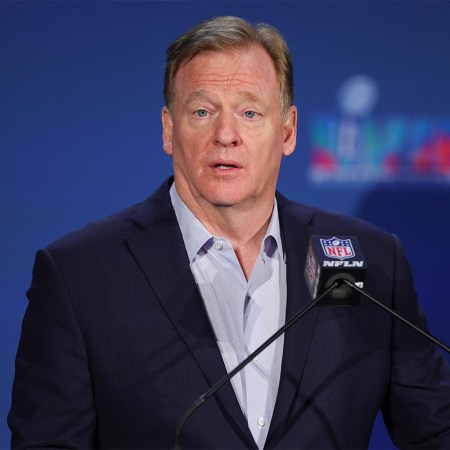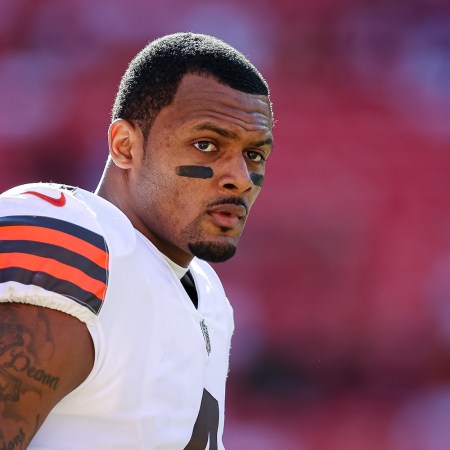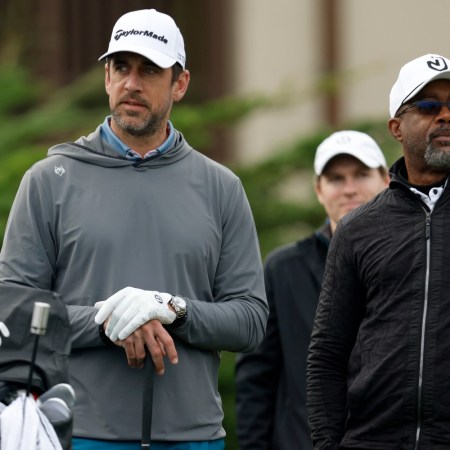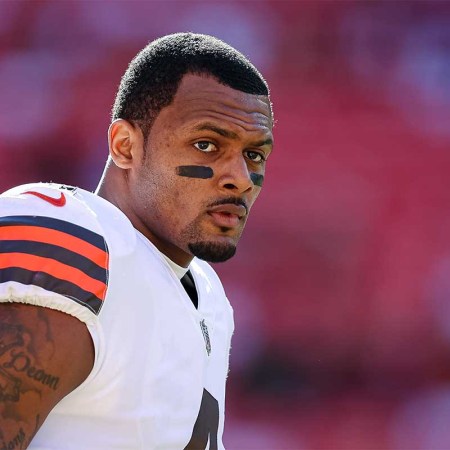Did you know that Matthew Stafford, who has gone 74-90-1 in the regular season as a starter in the NFL and never won a playoff game, is actually a better professional quarterback than perennial Pro-Bowl QBs Aaron Rodgers and Tom Brady?
Well, at least according to some random statistic that was researched by a pair of research-and-development interns for analytics company Pro Football Focus, he is.
Following an analysis of a quarterback’s expected points added (EPA) on passing plays with their EPA on passing plays directly after an interception, the PFF interns determined Stafford, who is now a member of Los Angeles Rams following an offseason trade, performed the best of any QB in the league following a pick out of all quarterbacks who threw at least 50 interceptions from 2011 to 2020. (For an explainer on EPA, which is essentially a measure of how a measure of how well a team or player performs relative to expectation, go here.) “Of Stafford’s 121 throws after an interception, he averaged a 71.9 completion percentage within those parameters,” per The Athletic. “He also averaged a depth-of-target of 8.2 yards on those throws with 8.9 yards per attempt.”
If that statistic sounds a bit convoluted, it is because it is, and that’s why the quarterbacks who are directly behind Stafford on the list are Mark Sanchez, Blake Bortles and Cam Newton, whereas Brady, Rodgers, Tony Romo and Peyton Manning are at the other, bad, end of the spectrum.
Not being an expert on analytics, your humble narrator could be wrong, but the thinking here is that since the success rate after an interception is calculated using a quarterback’s usual success rate, that really skews the numbers — not in a good way. Basically, a quarterback who has a lower average EPA, like Stafford or Sanchez, will seem to perform better following a pick because their bar is lower than a good quarterback like Brady or Rodgers. There’s also the fact that a poor quarterback has more experience, and more chances to perform better, following an interception because they throw more picks (which is bad and trumps how they perform after doing so).
Regardless, Stafford was pleased to find out how he does with what the Rams call PACE (Performance After Critical Error).
“Had no idea,” Stafford told The Athletic when presented with the findings. “I think the biggest thing for me — and they happen. They happen in practice. They happen in games. But it’s just understanding the mistake. Was it a physical mistake? Those are going to happen. Was it a mental mistake? Agh, can’t let that happen again. Keep playing ball — and trusting yourself. I kind of equate it to this: Just because I had a great play does not mean the next play is going to be a great play. You have to go out there and do it again. And just because I had a bad play does not mean the next play is going to be a bad play. So the ability to compartmentalize and play each play (on) its own is important, and it’s not something that’s easy — there are times when those turnovers eat at you and suck, but you have to move on and go. But if you play this position long enough, you find a way to figure out what the issue was, move on from it and go play.”
And then someone will come up with a (somewhat meaningless?) statistic to quantify it.
Thanks for reading InsideHook. Sign up for our daily newsletter and be in the know.


















